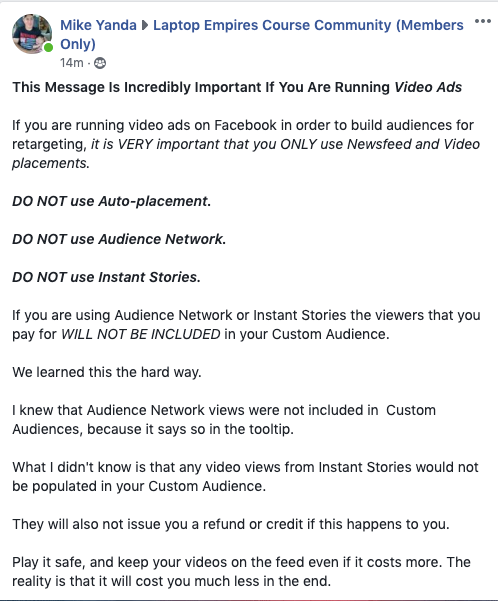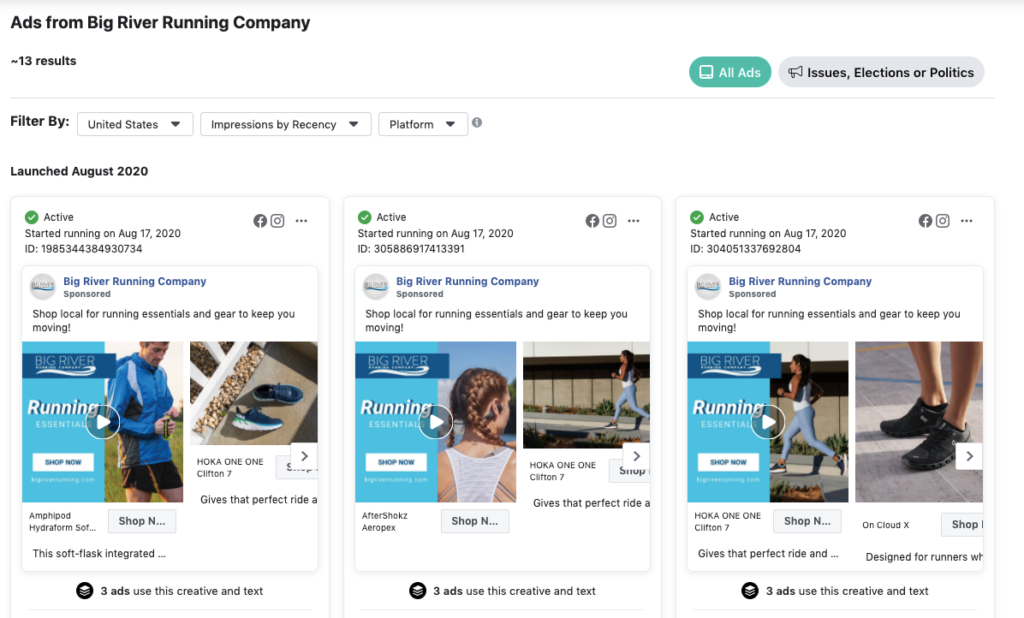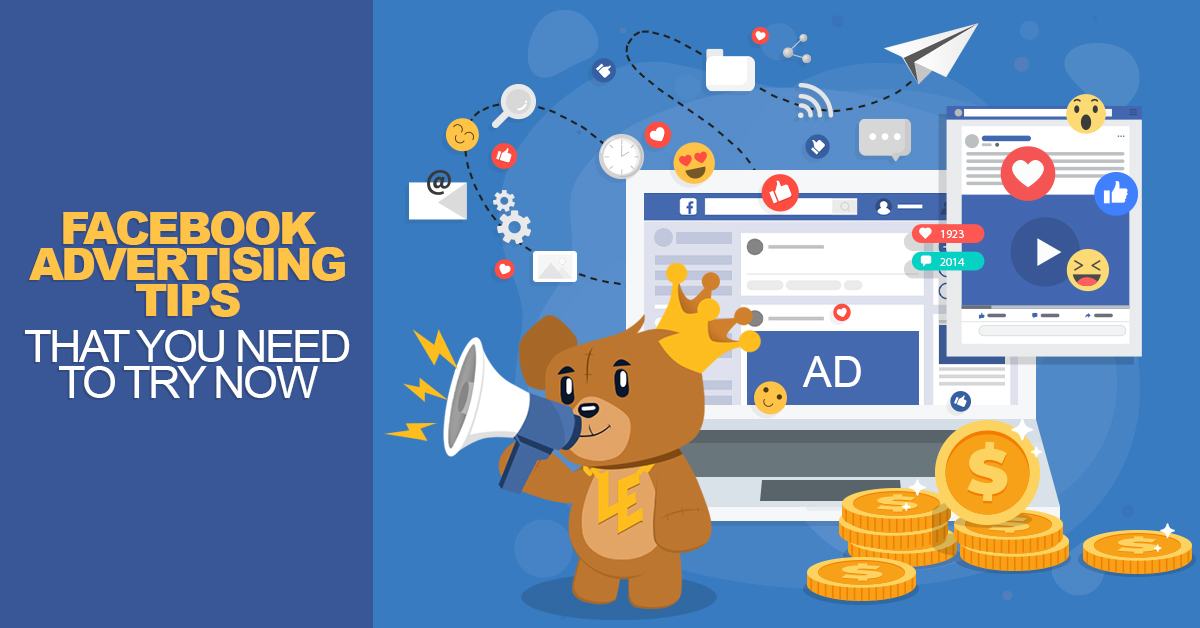Every Facebook ad how-to article out there is full of best practices and Facebook advertising tips that can help you get to run ads that engage users, drive leads, and generate revenue.
We decided to make it simple and present to you the best Facebook advertising tips of 2020.
These are ones we see working best for our readers, our ads, and are known in the digital marketing world to be proven ways to optimize your ads. You’re going to notice a recurring theme: make it easier for your audience. So that’s exactly what we’re doing for you.
8 Facebook Advertising Tips That You Need to Try Now
1. When using videos, get to the point
Facebook video ads are an appealing option for marketers because they give you a chance to tell a story, and that’s a really good way for new customers to get to know your brand. There’s also the opportunity for customer testimonials, tutorials, tours, etc.
But here’s the thing, while Facebook gives you a whopping 240 minutes of video time for some video ads, your videos should be 30 seconds or less, even better if it’s 15 seconds or less.
Not only do you want a short video, you want to make an impression and present your brand in the first 3 seconds of the video. This leads to a higher brand recall rate.

Put yourself in their shoes and think about what stands out to you. Is it a 10-minute video ad telling the story of how a business was founded? No. Ain’t nobody got time for that. More importantly, people probably don’t care.
Start with some kind of visual hook, like bright colors and faces showing some kind of emotion, to grab the user’s attention. Make your branding clear and present it early on, and then only give one call-to-action. It’s about simplicity and making it easy for users.
Here are a few more Facebook advertising tips for video ads:
- Try square videos: Not only do they take up more real estate when viewed on mobile, square videos outperform the landscape format by 30%-35%.
- Don’t require audio: 85% of Facebook videos are watched without sound. You can make sound an option, but adding closed captioning or focusing your video around visually striking content means your video ad will get more views than one that requires sound.
- Know video-specific specs: Before you spend any money creating your video ads, learn Facebook’s rules for file size, ratio, thumbnails, and more. Keep in mind that these specs change based on ad placement.
Here’s one last tip for video ads that was shared in the Laptop Empires Facebook Ads Course community:

2. Test your creative with A/B testing
There are creative best practices to follow, but ultimately what works for your ads is unique to your audience and brand. That’s where your A/B testing comes in.
A/B testing lets you experiment with your ads to find out which components work best, and you can test all kinds of variables: headlines, body copy, images, and call-to-actions. You can also test things like using bullet points, longer vs. shorter paragraphs, sentence length, using emojis in your copy, etc.
When you’re testing any of those variables, you only want to test a couple of variables at a time.
For example, you can take the same basic ad structure: same ad placement, same offer, same emotional appeal, and the same single message. But run an A/B test using different images or headlines or ad copy.
You’re testing the same ad, but presenting the ad in a slightly different way.
If you’re a complete beginner, only test one variable at a time. This gives you the opportunity to see how the results play out before you throw in more components. Here are the scenarios Facebook recommends testing first:
- Images: See which one does a better job capturing your audience’s attention
- Campaign budget optimization: Run one ad that has this turned on and one that has it turned off. Turning it on means you’re letting Facebook automatically and continuously find the best opportunities for your ad.
- Ad copy: Test a different headline or description, but keep everything else about your ad the same.
3. Check your site’s load time
You know how incredibly annoying it is to click on a link and then wait and wait and wait for it to load. You know who else finds that annoying? The Facebook users who are clicking on your ads.
You can check your site’s load time using Google PageSpeed Insights. It’s a free tool that analyzes how long it takes your page to load and offers suggestions to make it load faster. You can, (and should!) test it for mobile and desktop.
Here are some stats that back show you how important this is to users:
- 47% of consumers want pages to load in 2 seconds or less
- 40% abandon websites with load times greater than 3 seconds
- Even a 1-second delay can result in 7% fewer conversions
4. Create ads around high-performing content
This is one of the Facebook advertising tips that works especially well for bloggers.
Posts that have a high user engagement, which includes, higher time on page, a lower bounce or exit rate, and a higher click-through rate are sometimes referred to as “unicorns”.
But what’s really great about unicorns is that they typically convert well into leads.
Create ads around those unicorns and drive traffic to pages that are already performing well. You’ll want to make sure those posts are optimized for leads, meaning you’ve set up an opt-in and offer to capture email addresses.
Learn more about how bloggers can use Facebook ads in The Best Way to Quickly Grow Your Blog.
5. Want leads? Try Facebook Lead Ads
What’s unique about Facebook Leads Ads is that users aren’t taken off the Facebook platform. They stay on the app and you can collect leads in the ad. These are high-converting, bottom-of-the-funnel ads that can be set to collect email addresses, phone numbers, preferences, etc. You can even use them to book appointments or set up a call.
The way these ads work is that a user clicks on your ad and is taken to a form where they answer questions or fill out certain fields. Below is an example of a lead ad for a car dealership. The user clicks on the model they’re interested in and then clicks “Next.”

Facebook ads autofill with information the user has already given Facebook. They’ll review their info and see your privacy policy (if you’re not sure what to put in your privacy policy, it will default to Facebook’s general one, which can be customized).

After they slide to submit, they’ll see a thank you message that confirms the info has been submitted, and then you have that customer information. You can download the leads or connect your CRM.
If this is one of the Facebook advertising tips you want to try, here are some best practices to help you generate more leads:
- Keep it simple: While you can ask up to 15 questions, the shorter the form the better. You’ll get a better completion rate with short, pointed questions.
- Multiple choice questions are more user-friendly: You have the option for short answer questions, but that takes more energy, and you run the risk of someone closing the form before you capture their info.
- Run an A/B test to optimize your lead ads: Because this is probably a new-to-you ad option, testing will show you what kinds of questions keep users on page and completing the form.
- Lead Ads work best with lookalike and custom audiences: Set up audiences based on people with characteristics that are similar to your current customers (lookalike) or ones who have already engaged with your content (custom).
6. Don’t forget to look at these two Facebook ad metrics
You already know this, but your ad metrics can tell you a lot about how your ad is performing, but there are two metrics that often get overlooked: ad frequency and relevance. These two data points are included with the rest of your ad reporting metrics, like click-through-rate, reach, total spent, etc.
Ad frequency
Frequency is the number of times someone has seen your ad, and it’s super important if you have a narrow, targeted audience. Your ad will start to feel spammy if it’s seen too many times. The sweet spot is around 3-5 times.
If someone has seen your ad more than five times and still hasn’t clicked, what’s the likelihood they’ll actually click after seeing it a 6th, 7th, or 8th time? Not too high.
Running shorter campaigns, adjusting your budget, taking advantage of Facebook’s Campaign Budget Optimization, and getting better at targeting are all ways to keep your ad frequency in check.
You can also set up frequency rules when creating your ad campaign. One way to set up notifications for when your ad hits the frequency you want to achieve. From there you can track how your ad is performing and see if you want to keep running it or turn it off. Another way is to limit how often the ad can be shown to the same people.
Ad relevance score
Your ad’s relevance score is a rating of 1-10 (10 being the highest) that demonstrates how well your Facebook ads is being received by its target audience. It takes 500 impressions to get this metric.
Relevancy is a snapshot of your ad’s overall performance, taking into consideration how many people are clicking on your link and how many people are hiding or flagging your ads.
Low relevance scores mean your ad might not be targeted correctly, that you’re not using the right offers, or that something is off with your image or copy. Those last ones are easy to fix by running an A/B test.
7. Back your ads with a landing page
Where do your ads lead when a Facebook user clicks on one of them? Do they go to a random web page or a landing page that’s designed specifically for capturing leads?
Setting up landing pages for your ads takes a little more time and effort (why this is one of the Facebook advertising tips that too many businesses and brand new ad managers ignore), but it’s how you get better leads. It’s how your ad dollars serve a purpose.
You can set up specific web pages on your site to serve as landing pages or use software like ClickFunnels or Leadpages. Here is our review of the differences between these two services.
Whatever you do, here are some best practices to make sure your Facebook landing pages are optimized to collect leads:
- Your landing page needs to match your ad. Keep continuity by making sure your page and ads elements match, like visuals, colors, theme, etc. A lack of continuity can confuse users, and confused prospects won’t stick around.
- Keep it simple with one call-to-action: Your landing pages should be focused with only one CTA, and make sure that CTA matches what got them to click on the ad. Did you promise a coupon code? Are you trading a free download for an email address? Or are you closer to the bottom of the funnel and getting them primed to buy?
- Your landing page should look clear and crisp: Again, don’t overwhelm your user with too many visuals, tiny font, too many different fonts, etc. You want it to hold their attention, not give them a headache.
8. Take a look at what your competitors are doing
If you’re ever lacking inspiration, you can use the Facebook Ads Library to check out what other businesses in your niche are doing.
The Ads Library is simple to use, just enter a business name in the search bar and see what results pop up.

When you click on the business’s name, it pulls up a list of active and inactive ads.

It gives you an opportunity to see what kind of images and copy your competitors are using. You’ll also see that many of them are probably running the same ad with variations on images or copy — they might be doing A/B testing.
Sometimes all you need is a little inspiration to get your creative juices flowing. You can also look through these great Facebook ad examples to see what’s working for other niches.
While these ads can be fun to look at and may inspire you, please don’t copy them.
Facebook advertising tips — the final word
There’s no one-size-fits-all Facebook ads strategy, but what you’ve just read are things that work well for a majority of ads managers.
One of the tips for advertising on Facebook that was mentioned several times was the idea of testing. Around here, we call that TAFO (test and find out). Testing is such an important one because it gives you the chance to find out what works best for your audience.
Another theme you may have noticed in these Facebook advertising tips is that you need to make things simpler for the user. Think clear messages, ads that get to the point, pages that load quickly, continuity, etc.
Facebook is a place that people go to get away from work and stress. They want a mindless, easy experience.
Both of those themes, testing and user experience, point to the biggest tip of them all: keep your audience in mind. Find what works for them, think about how they’re using the app, discover what they want, and learn what their pain points are. That’s the real key to a stellar Facebook ads strategy.


Leave a Reply